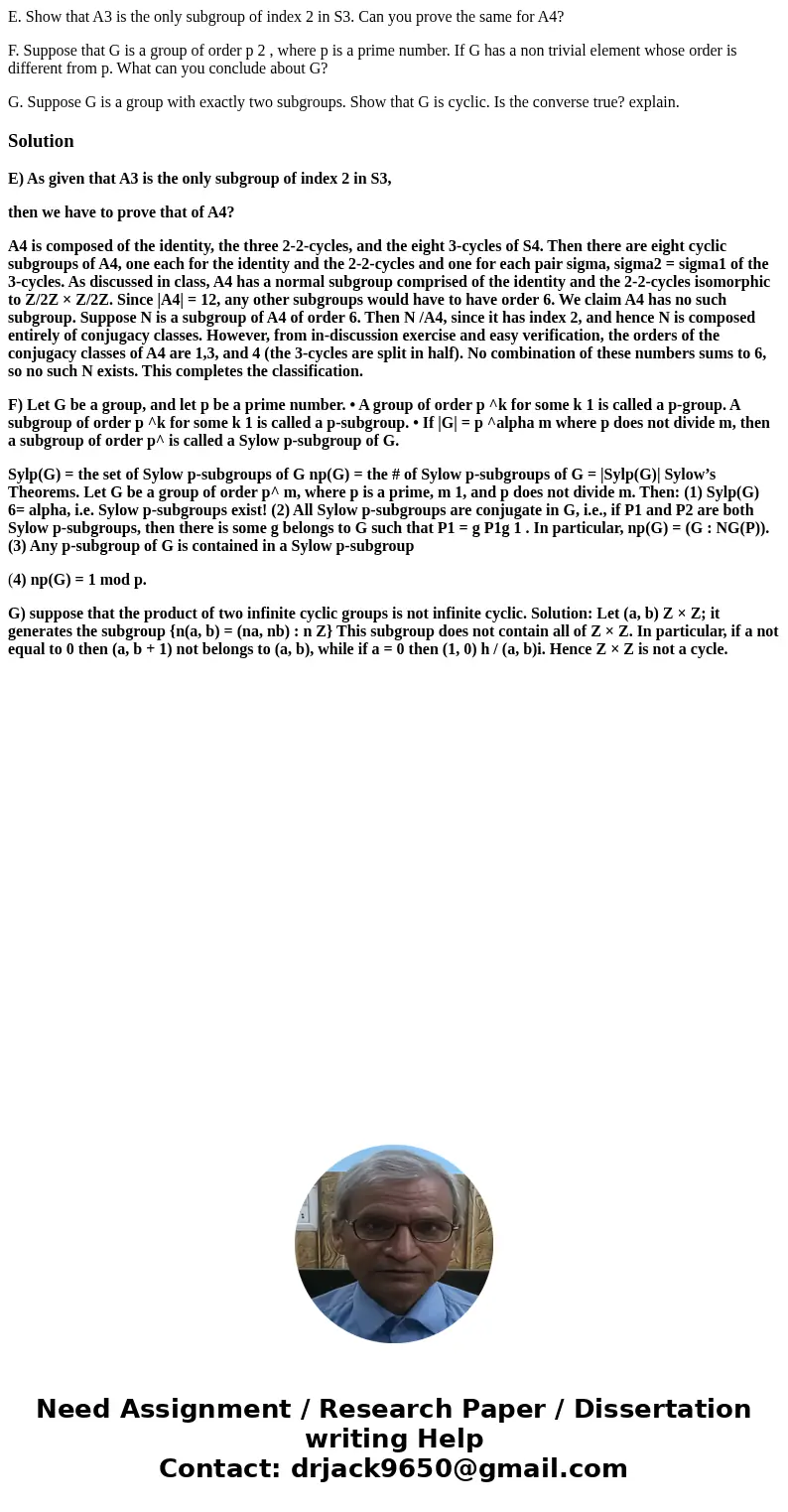E Show that A3 is the only subgroup of index 2 in S3 Can you
E. Show that A3 is the only subgroup of index 2 in S3. Can you prove the same for A4?
F. Suppose that G is a group of order p 2 , where p is a prime number. If G has a non trivial element whose order is different from p. What can you conclude about G?
G. Suppose G is a group with exactly two subgroups. Show that G is cyclic. Is the converse true? explain.
Solution
E) As given that A3 is the only subgroup of index 2 in S3,
then we have to prove that of A4?
A4 is composed of the identity, the three 2-2-cycles, and the eight 3-cycles of S4. Then there are eight cyclic subgroups of A4, one each for the identity and the 2-2-cycles and one for each pair sigma, sigma2 = sigma1 of the 3-cycles. As discussed in class, A4 has a normal subgroup comprised of the identity and the 2-2-cycles isomorphic to Z/2Z × Z/2Z. Since |A4| = 12, any other subgroups would have to have order 6. We claim A4 has no such subgroup. Suppose N is a subgroup of A4 of order 6. Then N /A4, since it has index 2, and hence N is composed entirely of conjugacy classes. However, from in-discussion exercise and easy verification, the orders of the conjugacy classes of A4 are 1,3, and 4 (the 3-cycles are split in half). No combination of these numbers sums to 6, so no such N exists. This completes the classification.
F) Let G be a group, and let p be a prime number. • A group of order p ^k for some k 1 is called a p-group. A subgroup of order p ^k for some k 1 is called a p-subgroup. • If |G| = p ^alpha m where p does not divide m, then a subgroup of order p^ is called a Sylow p-subgroup of G.
Sylp(G) = the set of Sylow p-subgroups of G np(G) = the # of Sylow p-subgroups of G = |Sylp(G)| Sylow’s Theorems. Let G be a group of order p^ m, where p is a prime, m 1, and p does not divide m. Then: (1) Sylp(G) 6= alpha, i.e. Sylow p-subgroups exist! (2) All Sylow p-subgroups are conjugate in G, i.e., if P1 and P2 are both Sylow p-subgroups, then there is some g belongs to G such that P1 = g P1g 1 . In particular, np(G) = (G : NG(P)). (3) Any p-subgroup of G is contained in a Sylow p-subgroup
(4) np(G) = 1 mod p.
G) suppose that the product of two infinite cyclic groups is not infinite cyclic. Solution: Let (a, b) Z × Z; it generates the subgroup {n(a, b) = (na, nb) : n Z} This subgroup does not contain all of Z × Z. In particular, if a not equal to 0 then (a, b + 1) not belongs to (a, b), while if a = 0 then (1, 0) h / (a, b)i. Hence Z × Z is not a cycle.

 Homework Sourse
Homework Sourse